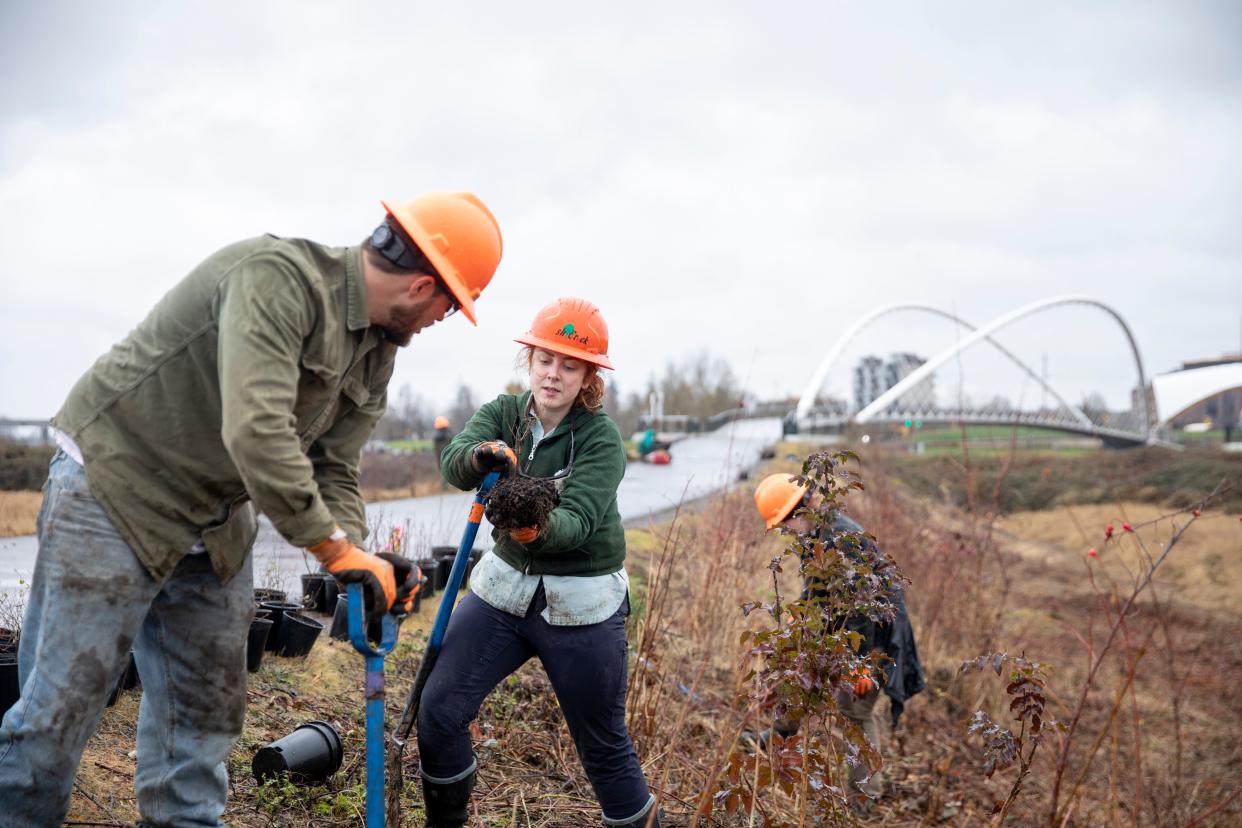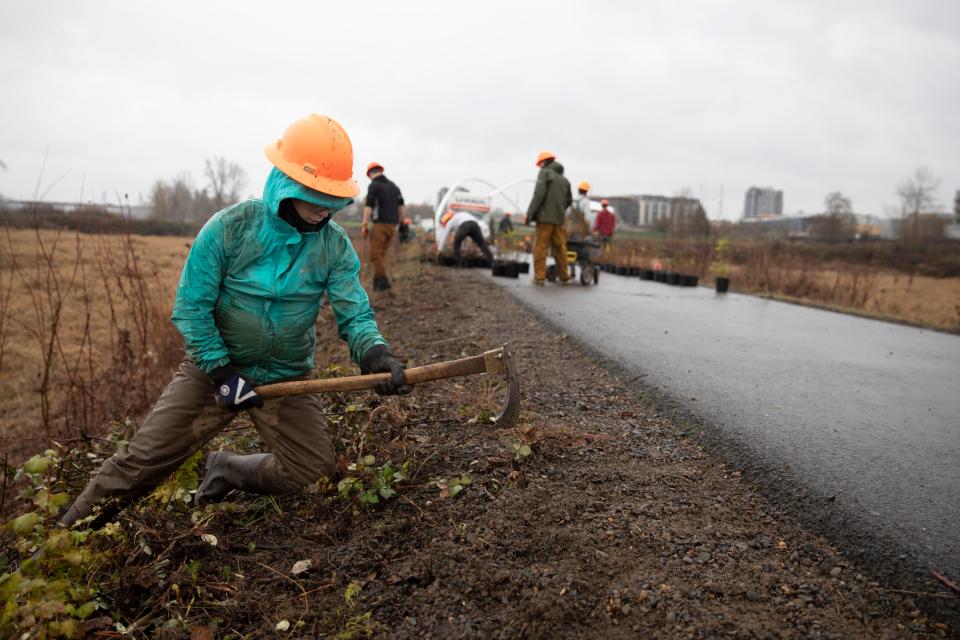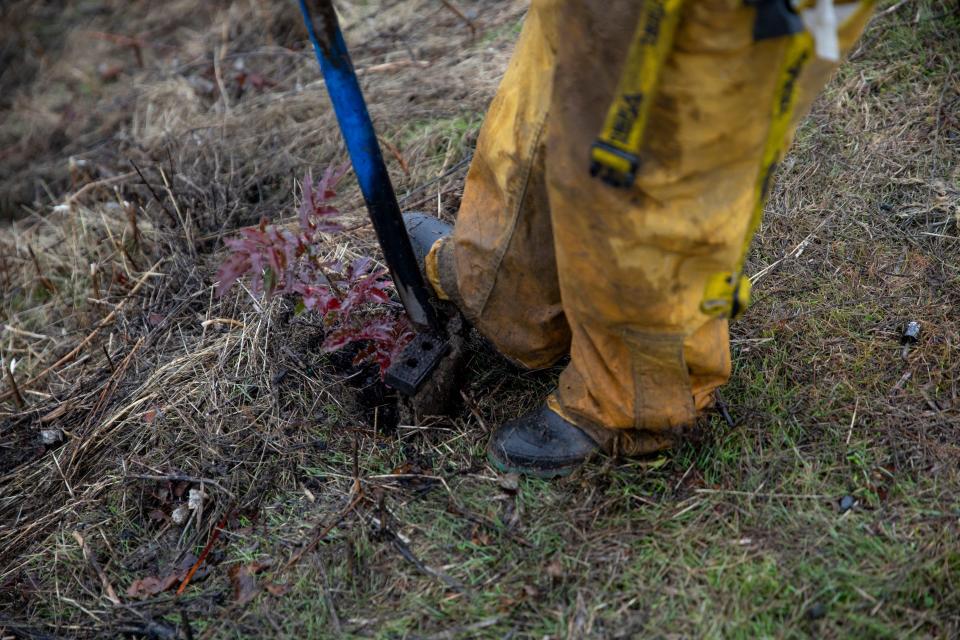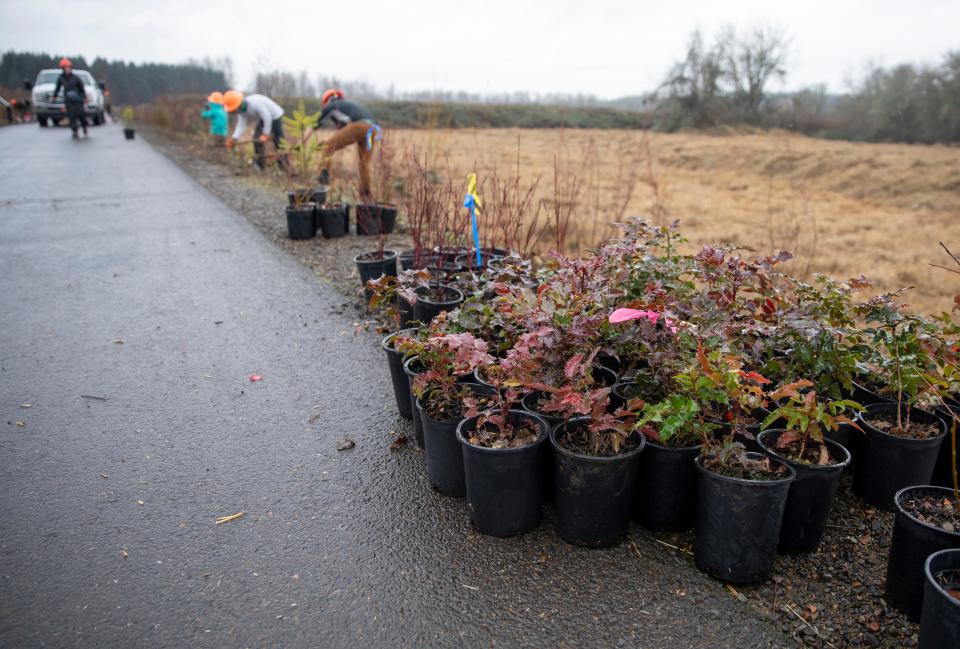Native plants added to trail connecting Riverfront Park to Minto-Brown

The 307-acre conservation area at the northern tip of Minto-Brown Island Park is home to more than 150 bird species along with lush native vegetation, cougars, skunks, coyotes, raccoons and snakes.
On Dec. 8 and Dec. 9, the trail connecting downtown's Riverfront Park to the city's beloved Minto-Brown Island Park closed to allow for native planting — an effort that is part of an ambitious restoration plan to plant thousands of native trees, bushes, flowers and shrubs on the former industrial site.
City officials said the temporary closure of the popular walking trail for the work included the section of trail south of the Peter Courtney Minto Island Bridge to the intersection of trails within Minto-Brown Island Park. Signs were posted in Riverfront Park and Minto-Brown Island Park explaining the temporary closure.
The Kalapuya Native Americans collected plants, hunted game and seasonally camped on the land that would later become industrial waste storage and landfills for Oregon Pulp and Paper and Boise Cascade Corporation.

The city purchased the land in 2013 and began work to restore the natural habitat along the Willamette River.
But decades of industrial use had altered the native habitats and promoted invasive species. Areas once dominated by shrubland are now home to acres of non-native canarygrass and thickets of blackberries.
Public works spokesman Trevor Smith said the closure will focus on replanting a new variety of native plants along the trail that will help protect the conservation area, preserve wildlife habitat and enhance the public experience in the park.
Ash Creek Forest Management was contracted to complete the nature-scaping. Workers are planting 3,500 container plants like snowberry, salmonberry, oceanspray, bitter cherry and Oregon grape; 2,500 Sitka and Pacific willows; and native seeds like yarrow, Oregon sunshine and blue wildrye.
A full list of the plants and vegetation used in this project can be found at CityofSalem.net.
Jennifer Mongolo, the city's senior natural resources planner, said having a dense buffer of native vegetation on both sides of the trail through the conservation area minimizes the disturbance to wildlife while still allowing walkers, runners, hikers and cyclists to enjoy the open views of the park.

Large groups of people, fast movements, dogs barking or other loud noises can be very disruptive to wildlife that feel unprotected. This results in undue stress, causing animals to exert extra energy to move to a new area or making them more vulnerable to predation or injury, she said.
"The buffer, once established, will provide a visual and auditory buffer for sensitive wildlife, giving them a safe place to hide while allowing trail users to still see into the conservation area," she said. "It will also provide additional foraging, resting and nesting habitat for a wider variety of birds and wildlife and better opportunities for movement across the conservation area."

Mongolo added that while the Himalayan blackberry brambles that previously dominated the sides of the trail had some habitat value (a few bird species used it for nesting and birds, wildlife and humans frequently snacked on the berries), the invasive plant caused more harm than good.
"The rapidly growing plant quickly overtakes higher value native vegetation that is essential to a broader variety of local wildlife, including sensitive and rare species, and the berries have low nutritional value for native wildlife as compared with the fruits of native plants," she said.
The dense thickets can grow over 6 feet tall and take over acres of land in a short period of time.
Because the density and height of these thorny brambles create barriers to wildlife movement and reduce biodiversity, removing them throughout the conservation area and replacing them with locally indigenous floodplain species is a high priority for the entire Minto Island Conservation Area.
Mongolo said the city has another, larger restoration in progress in the southwest portion of the conservation area to restore 48 acres of floodplain — 23 acres of which were previously a monoculture of blackberry.
"The process of replacing invasive species with native habitat is not a quick and easy task," she said. "The work is not finished once the plants are in the ground. To ensure the native plants survive and invasive plants do not take back over the site, we will be doing ongoing maintenance, including spot treatment of invasive plants and watering in dry summer months until the new plants are well established."

More information on the Minto Island Conservation Management Plan can be found online.
Reporter Whitney Woodworth covers city hall, economic development and business for the Statesman Journal. For questions, comments and news tips, email wmwoodworth@statesmanjournal.com, call 503-910-6616 or follow on Twitter @wmwoodworth.
This article originally appeared on Salem Statesman Journal: Native plants added to trail connecting Riverfront Park to Minto-Brown

